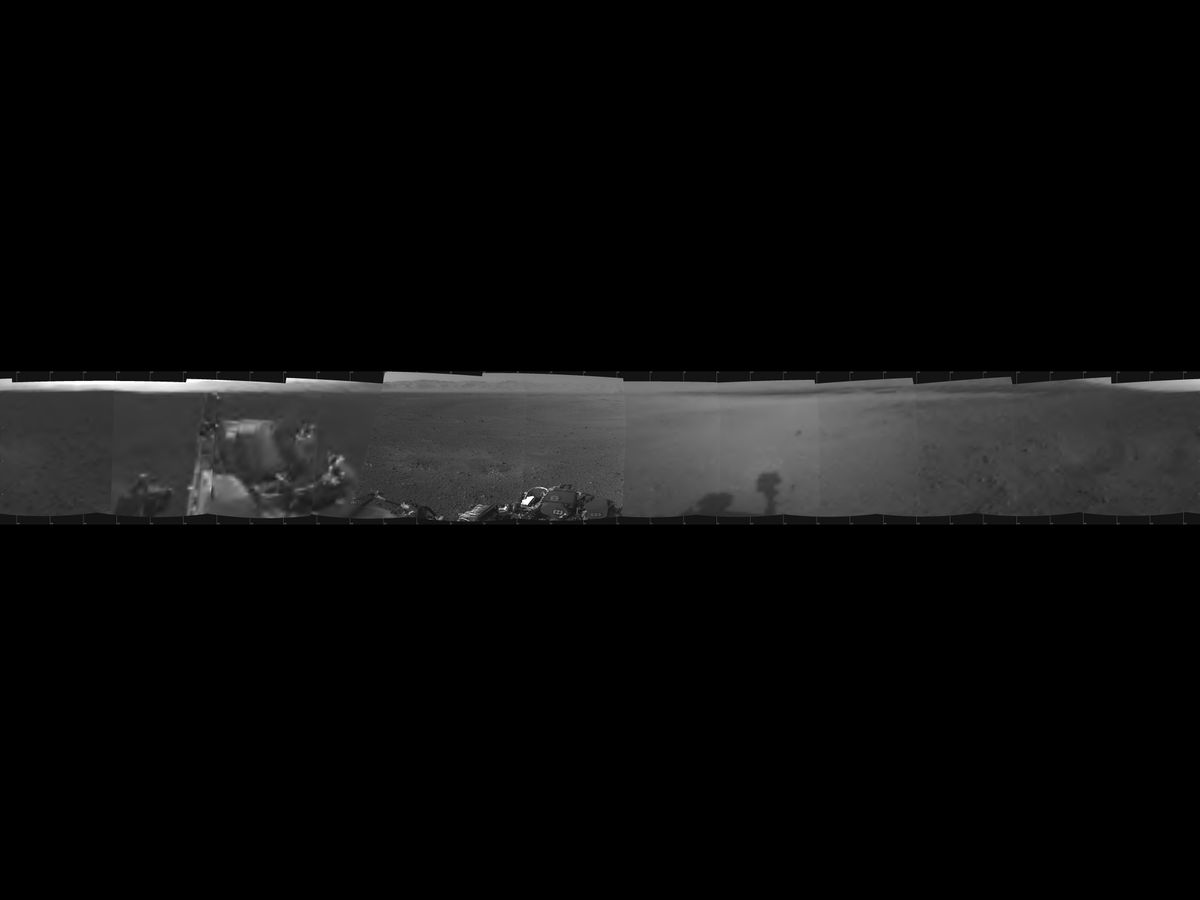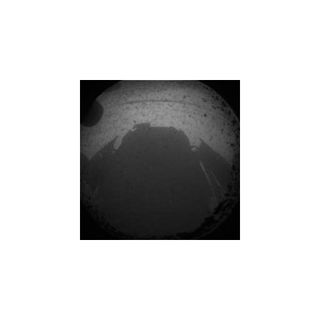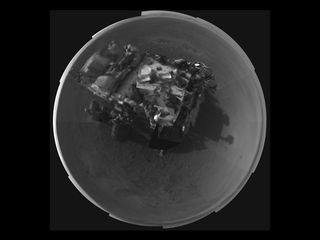On Mars, Curiosity Rover Ponders Panoramic View & Self-Portrait

NASA's Mars rover Curiosity is transforming into a Martian shutterbug.
Since its spectacular landing on Sunday (Aug. 5 PDT) , the car-size rover has beamed home swift views of its Gale Crater landing site and itself, but the latest photos from Curiosity's mast-mounted navigation camera (or Navcams) are the best ones yet. The rover raised its camera mast on Wednesday (Aug. 8, its second full day on Mars) and has already captured its first 360-degree panorama and a self-portrait from above.
The panoramic scene, in particular, has scientists excited because it revealed two nearby scorch marks in the Martian surface. The marks were created by the rocket-powered sky crane that lowered Curiosity to the Gale Crater floor.

The sky crane's rocket plumes excavated a small pit in the Martian surface during the landing maneuver. The result: a 1 1/2-foot long (half-meter) trench that Curiosity may eventually drive right up to in order to glimpse the newly exposed material.
"These Navcam images indicate that our powered descent stage did more than give us a great ride, it gave our science team an amazing freebie," Curiosity rover project scientist John Grotzinger, of the California Institute of Technology, said in a statement Wednesday. "It appears we can see Martian bedrock on the bottom."
Curiosity's panoramic photo is just the beginning of the rover's visual documentation of Mars. Most of the images to date have been obtained at low-resolution, but Curiosity's high-resolution cameras on the mast promise to snap even more spectacular views in days and weeks ahead.
The rover's first photo using its mast Navcam system was of the nearby Martian ground. The image shows the shadow of the Curiosity's mast, part of the rover's robotic arm (still folded away) and a stark, rock-studded landscape.
Sign up for the Live Science daily newsletter now
Get the world’s most fascinating discoveries delivered straight to your inbox.
Curiosity's self-portrait was taken by aiming the mast-mounted Navcams down at the rover's body and snapping photos a series of photos that were later stitched together into a single image. Despite their low-resolution, the images combine to form the recognizable squat shape of the 1-ton rover.

Meanwhile, a spacecraft in orbit around Mars has captured another rover-related sight. NASA's Mars Reconnaissance Orbiter spotted the impact sites of six tungsten weights that were used as ballast to balance Curiosity during its descent down to Mars.
The weights were jettisoned during landing and created dark impact craters that MRO spotted from space. The drop zones are much too far from Curiosity to be worthwhile targets to visit, mission scientists said.
NASA's $2.5 billion Mars rover Curiosity is expected to spend at least two Earth years exploring the Martian surface. The rover launched toward Mars in November 2011.
This story was provided by SPACE.com, a sister site to LiveScience. Visit SPACE.com for complete coverage of NASA's Mars rover Curiosity. You can follow SPACE.com Managing Editor Tariq Malik on Twitter @tariqjmalik and SPACE.com on Twitter @Spacedotcom. We're also on Facebook & Google+.

Tariq is the editor-in-chief of Live Science's sister site Space.com. He joined the team in 2001 as a staff writer, and later editor, focusing on human spaceflight, exploration and space science. Before joining Space.com, Tariq was a staff reporter for The Los Angeles Times, covering education and city beats in La Habra, Fullerton and Huntington Beach. He is also an Eagle Scout (yes, he has the Space Exploration merit badge) and went to Space Camp four times. He has journalism degrees from the University of Southern California and New York University.












